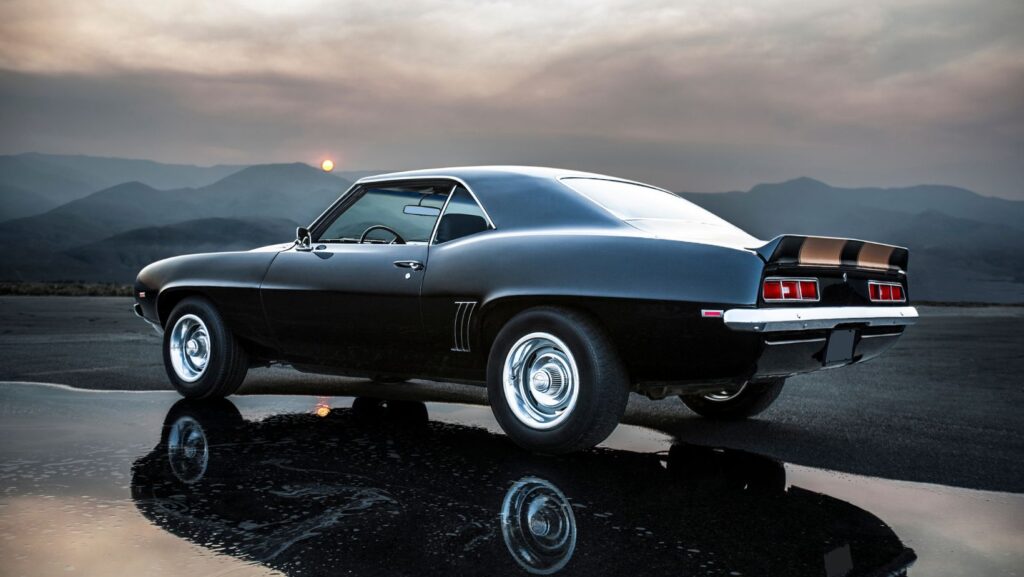What Is a Muscle Car?

When you hear the revving of a powerful engine, feel the adrenaline rush as you press your foot against the pedal, and sense the sheer force propelling you forward, you may just be in the presence of a muscle car.
These iconic vehicles have carved out a special place in the hearts of automotive enthusiasts. This is your guide to the essence and allure of muscle cars, from the 1964 Ford Mustang to the 2019 Dodge Charger and beyond.
Evolution of Muscle Cars
In the tumultuous 1960s, a new breed of automobile emerged — the muscle car. These vehicles were born from the American love affair with speed and power, combining high-performance engines with sleek designs.
The era of muscle cars was marked by fierce competition among automakers to produce the fastest and most powerful machines on the market. Key players like Ford, Chevrolet, and Chrysler entered the scene with legendary models such as the Ford Mustang, Chevrolet Camaro, and Dodge Charger.
Characteristics of Muscle Cars
What defines a muscle car? At its core, a muscle car is a high-performance vehicle with a robust V8 engine, typically powering the rear wheels. This configuration allows for explosive acceleration and a rumbling exhaust note that sets muscle cars apart from their counterparts.
Muscle cars’ raw power and unmistakable presence are complemented by their iconic designs.

From the bold stripes and hood scoops to the muscular curves and aggressive stances, these vehicles exude a sense of strength and dominance. A muscle car commands attention and respect, whether at rest or in motion.
Notable Muscle Car Models
Certain models have achieved legendary status for their performance and cultural impact among the lineup of popular muscle cars. The Dodge Challenger, Chevrolet Chevelle, and Pontiac GTO are just a few iconic names that have left an indelible mark on automotive history.
In the modern era, the Chevrolet Camaro and Ford Mustang, in particular, carry the torch for muscle car enthusiasts. These dynamic vehicles combine cutting-edge technology with heritage-inspired design cues, offering a blend of nostalgia and innovation that captures the essence of the muscle car spirit.
Performance and Speed
Muscle cars’ unrelenting focus on performance and speed sets them apart from their counterparts. Equipped with high-output V8 engines producing impressive horsepower and torque figures, muscle cars deliver heart-pounding acceleration and exhilarating straight-line speed.
Muscle cars are known for their blistering top speeds and lightning-quick acceleration times, whether they’re tearing down the drag strip or cruising along the highway. The thrill of pressing down on the gas pedal and feeling the surge of power beneath you defines the muscle car driving experience.
In muscle cars, performance isn’t just about numbers — it’s about the visceral connection between man and machine, the symphony of engine revs and exhaust growls that awaken the senses, and the sheer exhilaration of pushing a powerful car to its limits.
Pop Culture and Iconic Status
Muscle cars have transcended their status as simple vehicles, becoming cultural icons that resonate across generations. From classic films like “Bullitt” featuring a Ford Mustang, to the modern-day “Fast & Furious” franchise showcasing high-octane action, muscle cars have played starring roles on the silver screen.
Their sleek designs, thunderous engines, and rebellious spirit have made them enduring symbols of freedom, power, and Americana. In addition to cinema, muscle cars have left an indelible mark on music, fashion, and art.

Songs like “Little GTO” by Ronnie & the Daytonas and “Mustang Sally” by Wilson Pickett pay homage to these legendary vehicles, while artists like Andy Warhol have immortalized muscle cars in their works. Muscle cars’ unmistakable look and sound have become cultural touchstones, influencing everything from fashion trends to advertising campaigns.
Customization and Aftermarket
One of the hallmarks of the muscle car scene is the passion for customization. Enthusiasts personalize their vehicles with performance upgrades, custom paint jobs, and distinctive features. Whether it’s installing a high-performance exhaust system, upgrading the suspension, or adding racing stripes, the possibilities for customization are endless.
The aftermarket industry caters to the diverse needs of muscle car owners, offering a wide range of parts and accessories to enhance performance, aesthetics, and overall driving experience. From iconic brands like Holley and Edelbrock to local custom shops specializing in bespoke modifications, muscle car enthusiasts have a wealth of options.
Pedal to the Metal
In the heart-pounding world of muscle cars, where horsepower reigns supreme and speed is king, these iconic machines continue to captivate and inspire. From their humble beginnings in the 1960s to their legendary status in pop culture today, muscle cars embody the thrill of the open road and the spirit of freedom on four wheels.
As enthusiasts look ahead to the future of muscle cars, one thing remains certain — the passion and excitement surrounding these vehicles will endure. Whether in classic form or electrified evolution, muscle cars will continue to push the boundaries of performance, style, and innovation, ensuring their place in automotive history for generations to come.

 Why Gambling Can Be the Hobby If You Do It Right
Why Gambling Can Be the Hobby If You Do It Right  How to Plan the Ultimate Italian Celebration
How to Plan the Ultimate Italian Celebration  Are You Ready for a European Marriage? Your Strategic Guide to European Marital Success
Are You Ready for a European Marriage? Your Strategic Guide to European Marital Success